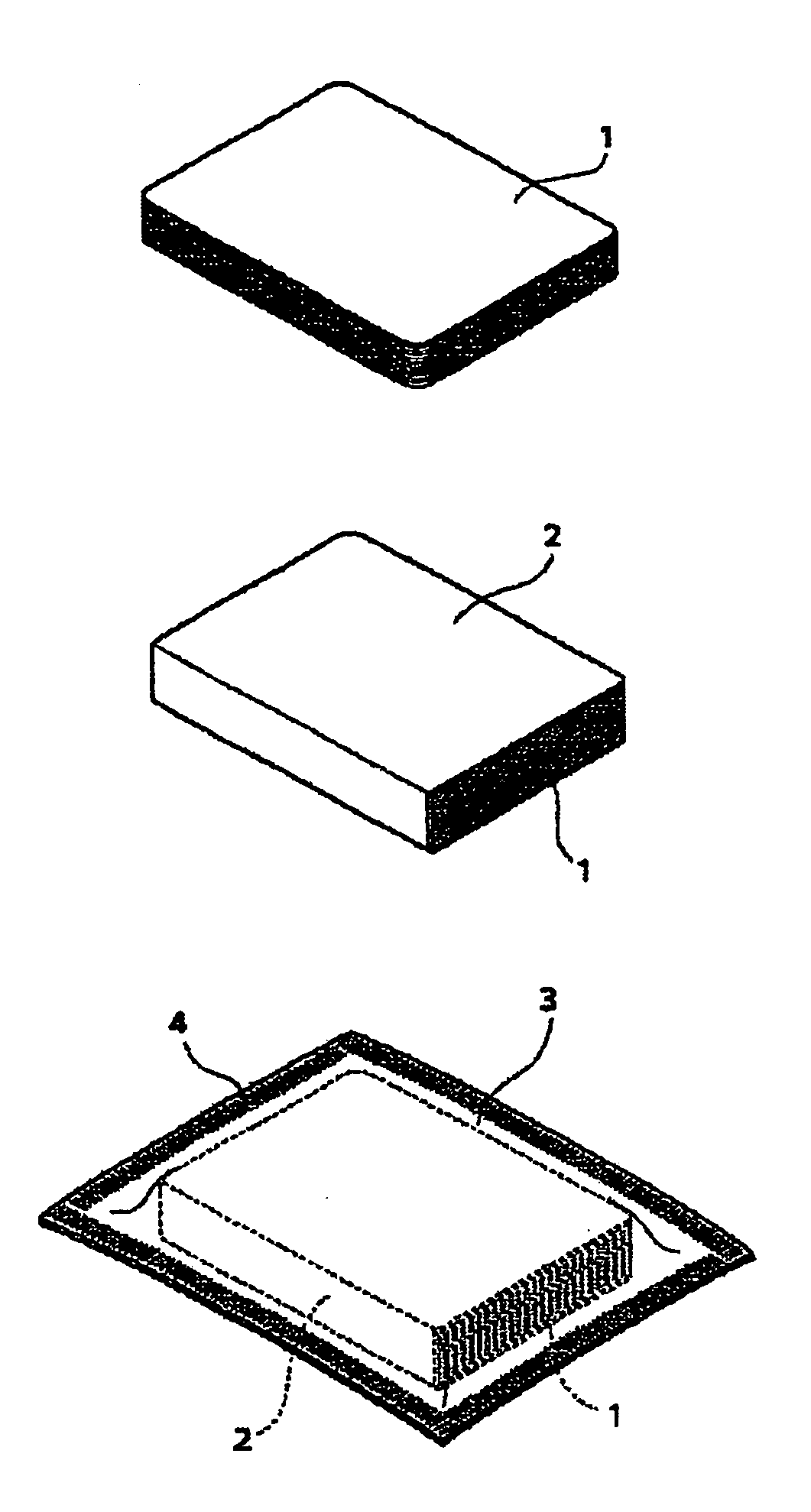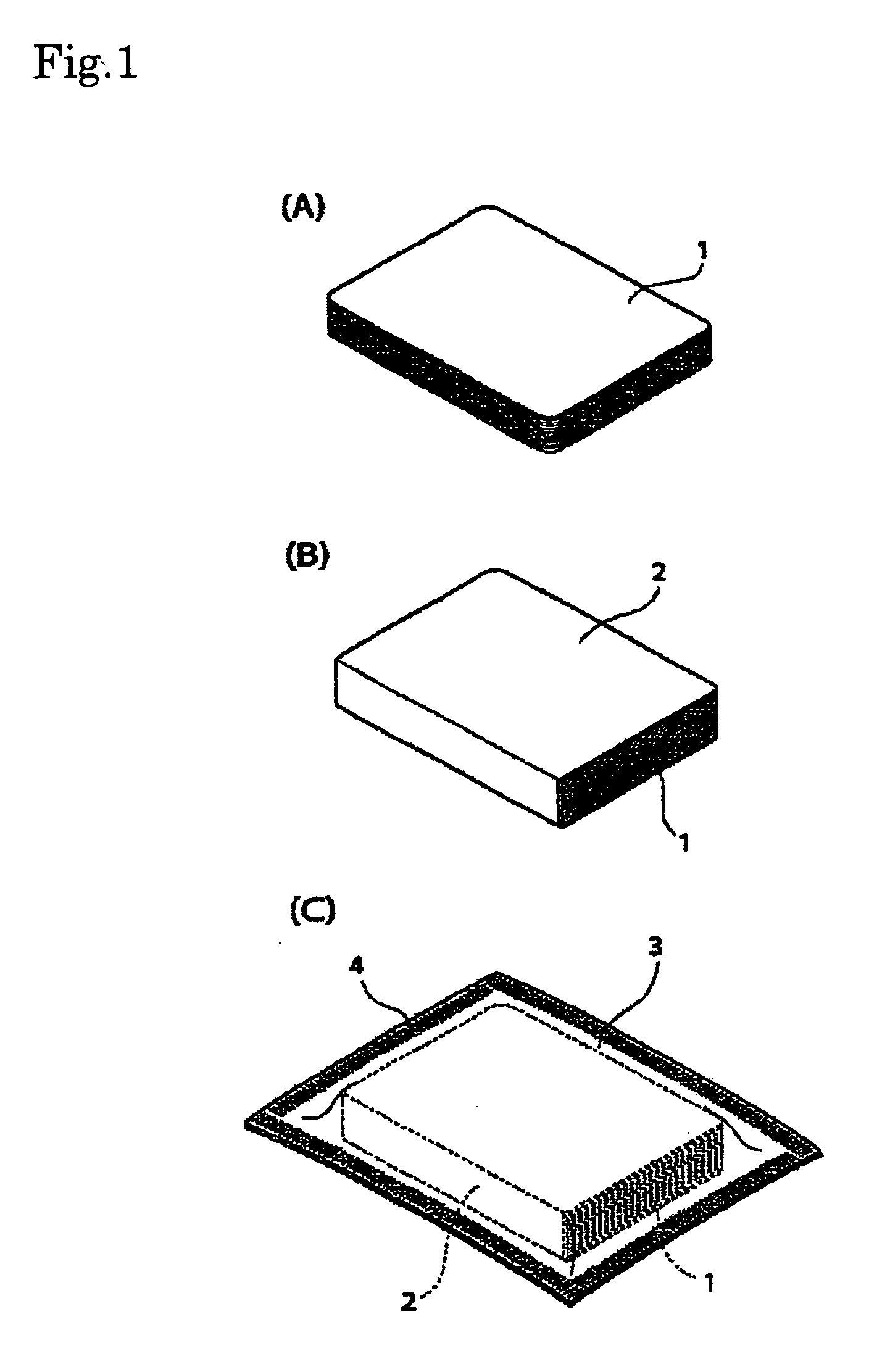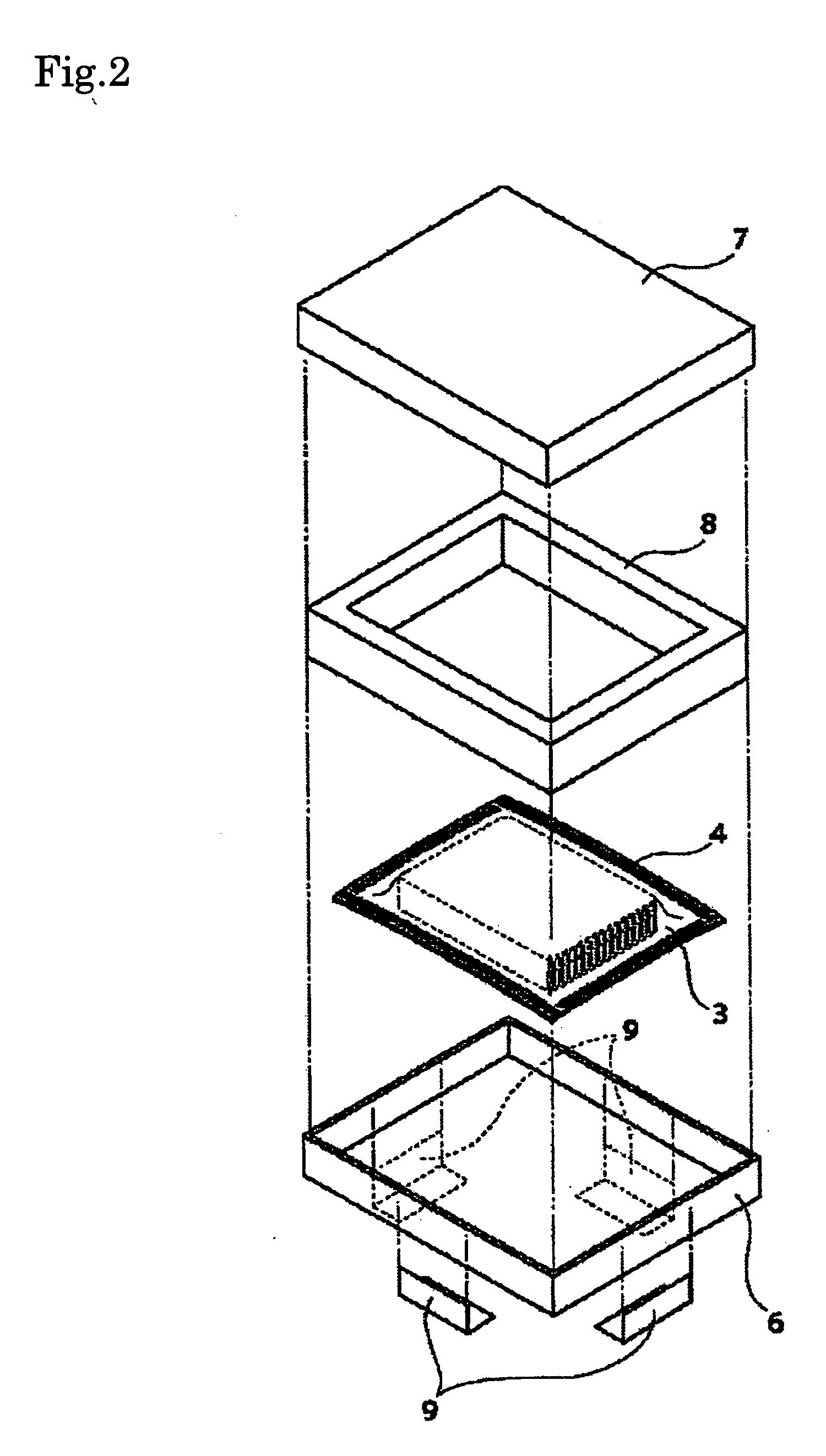Silver halide photographic light-sensitive material and package thereof
a technology of silver halide and photographic light-sensitive materials, applied in the direction of photosensitive materials, auxiliaries/base layers of photosensitive materials, instruments, etc., can solve the problems of air oxidation and hence instable development, increase of fog, and fluctuation of sensitivity, so as to reduce uneven processing, stable processing system, and easy transportation
- Summary
- Abstract
- Description
- Claims
- Application Information
AI Technical Summary
Benefits of technology
Problems solved by technology
Method used
Image
Examples
example 1
[0372]>
Solution 1Water750mLGelatin20gSodium chloride3g1,3-Dimethylimidazolidine-2-thione20mgSodium benzenethiosulfonate10mgCitric acid0.7gSolution 2Water300mLSilver nitrate150gSolution 3Water300mLSodium chloride38gPotassium bromide32gK3IrCl6 (0.005% in 20% KCl6.0 × 10−7mol / Ag molaqueous solution)(NH4)3[RhCl5(H2O)] (0.001%2.5 × 10−7mol / Ag molin 20% NaCl aqueous solution)
[0373] K3IrCl6 (0.005%) and (NH4)3[RhCl5(H2O)] (0.001%) used for Solution 3 were prepared by dissolving powder of each in 20% aqueous solution of KCl or 20% aqueous solution of NaCl and heating the solution at 40° C. for 120 minutes.
[0374] Solution 2 and Solution 3 in amounts corresponding to 90% of each were simultaneously added to Solution 1 maintained at 38° C. and pH 4.5 over 20 minutes with stirring to form nucleus grains having a diameter of 0.21 μm. Subsequently, Solution 4 and Solution 5 shown below were added over 8 minutes. Further, the remaining 10% portions of Solution 2 and Solution 3 were added over 2 m...
example 2
[0406]>
Solution 1Water750mLGelatin20gSodium chloride1g1,3-Dimethylimidazolidine-2-thione20mgSodium benzenethiosulfonate10mgCitric acid0.7gSolution 2Water300mLSilver nitrate150gSolution 3Water300mLSodium chloride38gPotassium bromide32gK3IrCl6 (0.005% in 20% KCl6.0 × 10−7mol / Ag molaqueous solution)(NH4)3[RhCl5(H2O)] (0.001%6.0 × 10−7mol / Ag molin 20% NaCl aqueous solution)
[0407] K3IrCl6 (0.005%) and (NH4)3[RhCl5(H2O)] (0.001%) used for Solution 3 were prepared by dissolving powder of each in 20% aqueous solution of KCl or 20% aqueous solution of NaCl and heating the solution at 40° C. for 120 minutes.
[0408] Solution 2 and Solution 3 in amounts corresponding to 90% of each were simultaneously added to Solution 1 maintained at 38° C. and pH 4.5 over 20 minutes with stirring to form nucleus grains having a diameter of 0.17 μm. Subsequently, 500 mg of 4-hydroxy-6-methyl-1,3,3a,7-tetrazaindene was added, and then Solution 4 and Solution 5 shown below were added over 8 minutes. Further, the...
example 3
>
[0427] In a volume of 500 mL of a silver nitrate aqueous solution dissolving 150 g of silver nitrate and 500 mL of a halide salt aqueous solution containing (NH4)2RhCl5(H2O) in an amount corresponding to 2×10−7 mol per mol of silver after grain formation and K3IrCl6 in an amount corresponding to 1×10−7 mol per mol of silver after grain formation and dissolving 44 g of potassium bromide and 34 g of sodium chloride were added to a 2% gelatin aqueous solution dissolving 3 g / L of sodium chloride, 0.02 g / L of 1,3-dimethyl-imidazolinethione, 0.5 g / L of citric acid, 4 mg / L of sodium benzenethiosulfonate and 1 mg / L of sodium benezenesulfinate at 38° C. by the controlled double jet method over 20 minutes with stirring to obtain silver chlorobromide grains having a mean grain size of 0.21 μm and a silver chloride content of 58 mol %, and thereby perform nucleation. Subsequently, 200 mL of a silver nitrate aqueous solution dissolving 50 g of silver nitrate and 200 mL of a halide salt solution...
PUM
| Property | Measurement | Unit |
|---|---|---|
| Fraction | aaaaa | aaaaa |
| Electric charge | aaaaa | aaaaa |
| Current | aaaaa | aaaaa |
Abstract
Description
Claims
Application Information
 Login to View More
Login to View More - R&D
- Intellectual Property
- Life Sciences
- Materials
- Tech Scout
- Unparalleled Data Quality
- Higher Quality Content
- 60% Fewer Hallucinations
Browse by: Latest US Patents, China's latest patents, Technical Efficacy Thesaurus, Application Domain, Technology Topic, Popular Technical Reports.
© 2025 PatSnap. All rights reserved.Legal|Privacy policy|Modern Slavery Act Transparency Statement|Sitemap|About US| Contact US: help@patsnap.com



